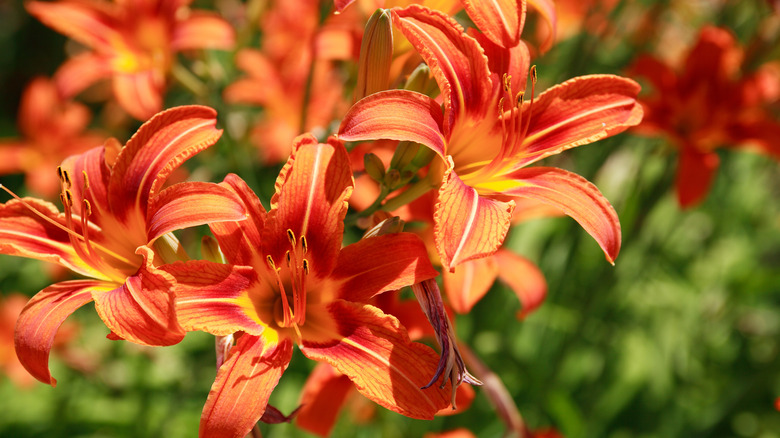Have a problem with invasive plants taking over your garden or unsure if a plant is invasive? Before you introduce a new species to your yard, it’s important to understand the nature and growing style of your new plant to properly care for it and prevent it from colonizing the rest of your yard.
Invasive plants are non-native species that have the ability to rapidly spread and dominate an ecosystem, often causing harm to native plants, animals, and habitats. These plants have the ability to out-compete native species for resources such as sunlight, water, and nutrients, leading to a decline in biodiversity within your yard. Due to their aggressive growth and lack of natural predators, invasive plants can quickly take over an area, making them a significant concern for gardeners.
If you determine a plant is invasive and you’d still like to include it in your garden, there are steps you can take to contain it. Mulching around the base of your plants will prevent new seeds from many types of plants from taking root and overproducing; however, some plants spread rapidly through their roots and require more intentional containment. For plants like strawberries, mint, and lilies, try planting them in containers and burying them in your garden to prevent them from taking over.
How to bury potted plants
If you’re married to planting invasive species like black-eyed Susans or mint in your yard, it’s best to be cautious and bury them in containers in the ground. To begin, select a suitable container for your invasive plant that is large enough to accommodate the plant’s root system and allows for proper drainage. The planter should also be at least ten inches in depth and made from a durable material to prevent the roots from growing through.
Next, prepare the container for planting. Using a utility knife, remove the bottom of the container and then fill it with a well-draining potting mix, leaving enough space for the plant’s root ball. Gently remove the plant from its original pot, being careful not to damage the roots. Place the plant in the container, ensuring that it is centered and upright. Fill any remaining space with additional potting mix, pressing it down lightly to secure the plant in place.
Once the plant is potted, it is time to bury the container in the ground. Choose a suitable location in your garden where the plant will receive adequate sunlight and water. Dig a hole that is deep enough to accommodate the entire container, ensuring that the rim of the container is level with or slightly above the ground surface. Carefully place the pot into the hole, making sure that the container is fully submerged. Backfill the hole with soil, gently firming it around the container to provide stability.
Why this method works

Planting invasive species in planters or containers before planting them in the ground is an effective way to contain them from overtaking your garden. First, invasive plants have a tendency to spread rapidly through their roots, sending out runners or rhizomes that can quickly colonize a large area. By planting them in containers, you create a physical barrier that prevents these roots from spreading beyond the confines of the planter. This containment method helps to restrict the plant’s growth and prevents it from encroaching on other plants in your garden.
Secondly, planting invasive species in planters allows for better control and management of their growth. Invasive plants are often aggressive and can out compete native species for resources such as sunlight, water, and nutrients. By confining them to containers, you can more easily monitor their growth and prevent them from dominating the surrounding plants. You can also control the amount of water and nutrients they receive, ensuring that they do not receive an excess that could further fuel their invasive tendencies or leach resources from the plants around them.
Lastly, planting invasive species in planters provides a practical solution for gardeners who still want to include these plants in their gardens. Some invasive species, such as black-eyed Susans or mint, may have desirable characteristics like beautiful flowers or attractive, fragrant foliage. By planting them in containers, you can enjoy their aesthetic qualities without risking the negative impacts they may have on the rest of your garden.



